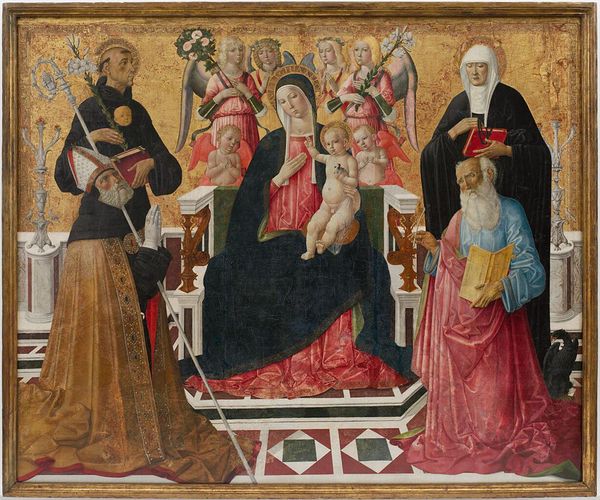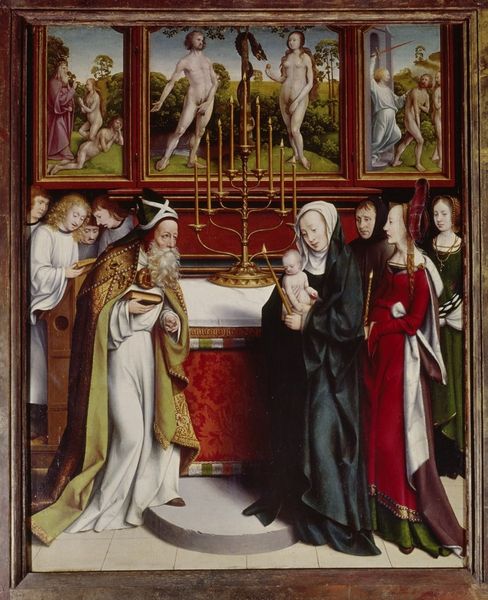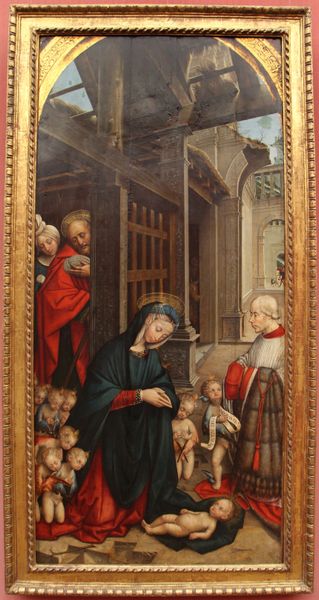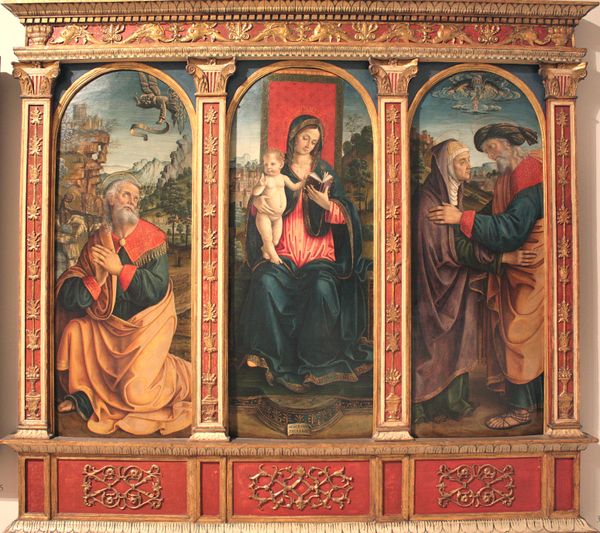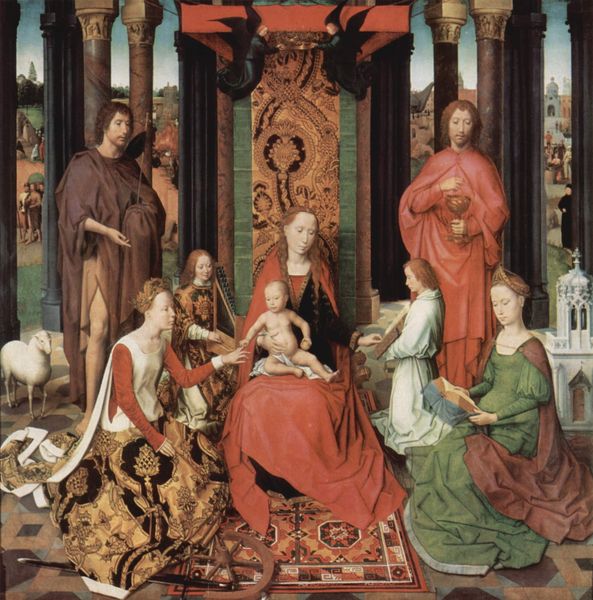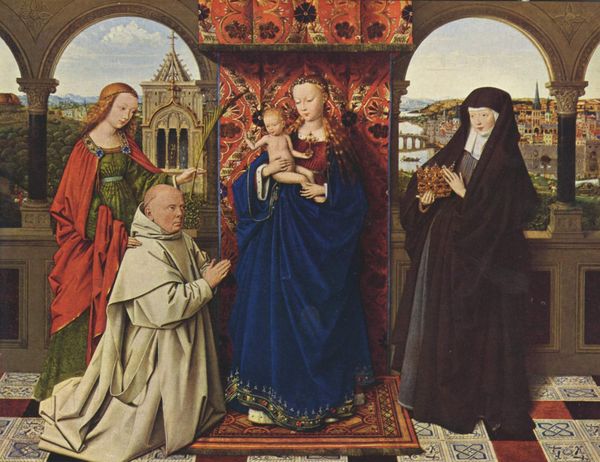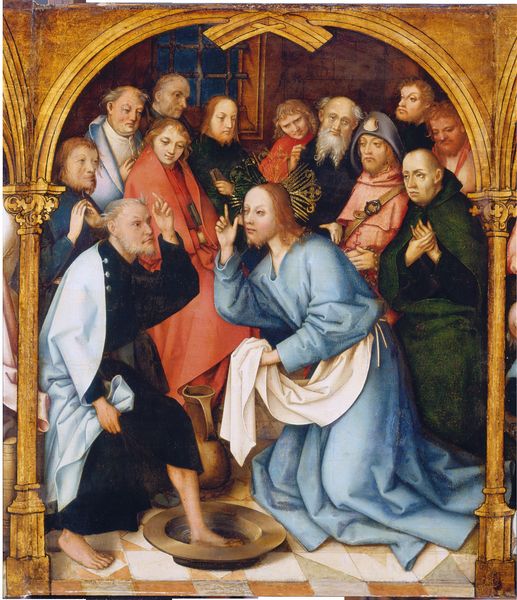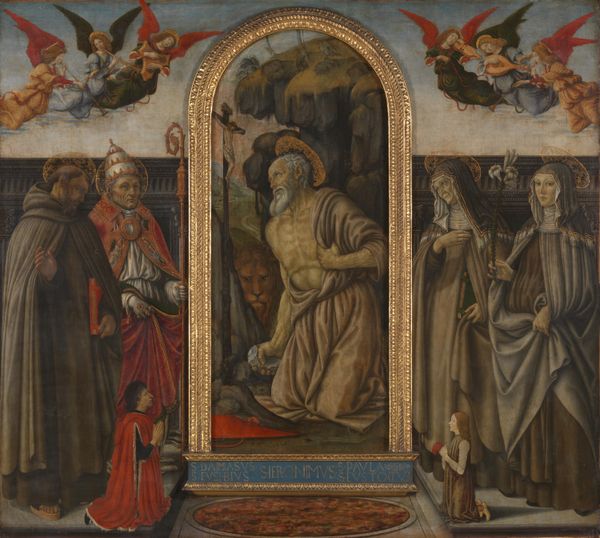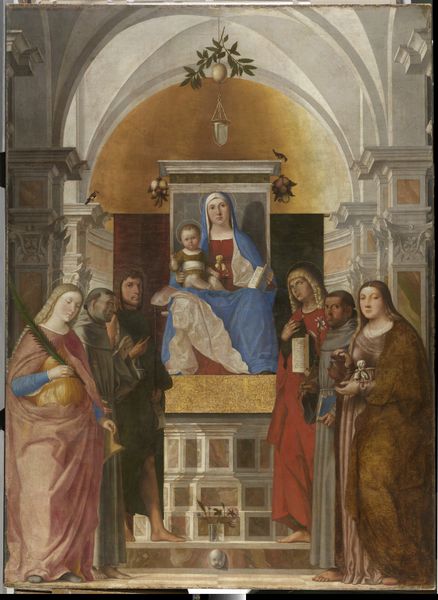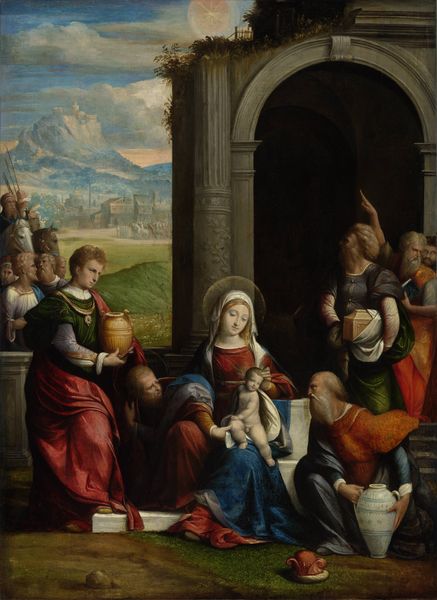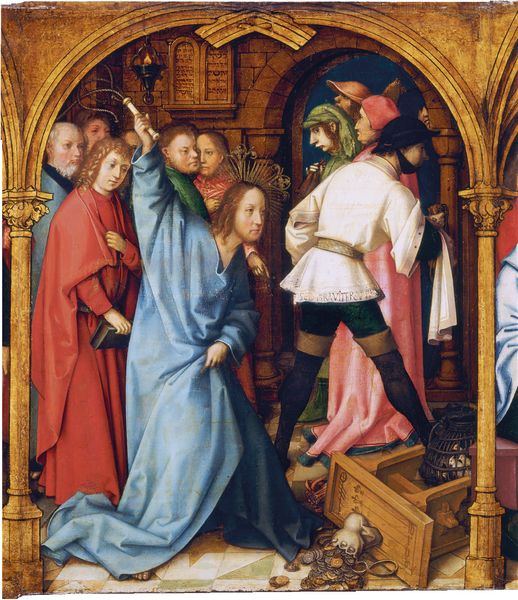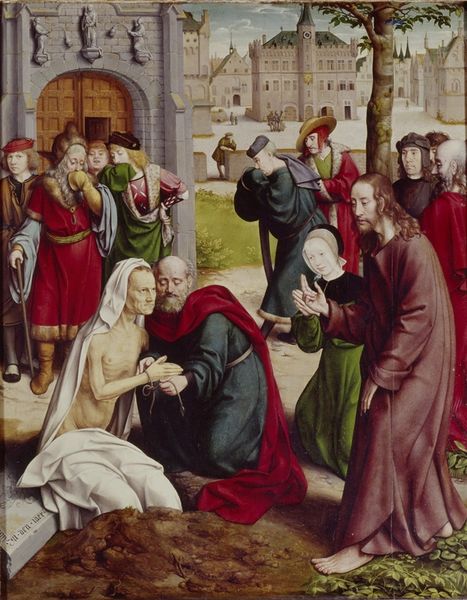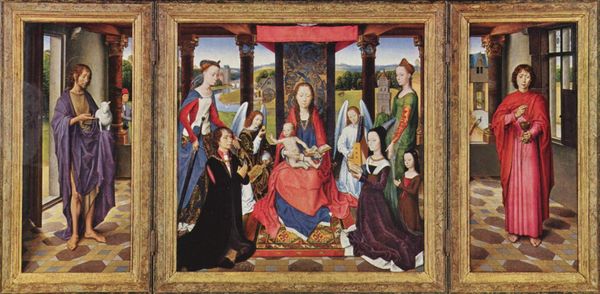
The Virgin and Child with St. James and St. Dominic Presenting the Donors and their Family, known as the Virgin of Jacques Floreins 1490
0:00
0:00
painting, oil-paint
#
painting
#
oil-paint
#
oil painting
#
group-portraits
#
history-painting
#
northern-renaissance
#
portrait art
Dimensions: 130 x 160 cm
Copyright: Public domain
Curator: Looking at this oil on wood painting from 1490 by Hans Memling, titled "The Virgin and Child with St. James and St. Dominic Presenting the Donors and their Family, known as the Virgin of Jacques Floreins," the sheer number of figures strikes me immediately. Editor: Yes, a striking accumulation of bodies. There's a clear social hierarchy constructed by their positioning. Note how the donors are kneeling closest to the Virgin, an acknowledgement of both their financial contribution and societal standing in relation to religious authority. Curator: And Memling really showcases his skill in representing various textures; the delicate fabrics, the wooden architecture. You can almost feel the weight of the cloth in the donors' robes. What I find especially noteworthy is his approach to portraiture—almost mass-produced likeness. Editor: But this uniformity raises interesting questions about identity. Notice how the women on the right are shrouded almost identically, their individual features secondary to their roles within the religious structure. Curator: From a purely material point of view, consider the pigments used. The vibrant red of the Virgin's dress is remarkable; he almost certainly used expensive materials. This wasn’t just paint; it was a demonstration of affluence reflected in the donor's pockets. Editor: Agreed, that color certainly highlights her position of power. But I think focusing on materiality is too simplistic here. Consider also the symbolism. These aren't just representations; they're articulations of a society’s beliefs, power structures solidified on this single wood panel. Curator: That's undeniable, yet, seeing how those colours were sourced, seeing the woodworking so cleverly built for support, you begin to appreciate this artwork as a result of labor, of collaborative efforts. A network is made of production, not only pious intent. Editor: Perhaps. Ultimately though, the historical moment freezes before us. We have those gendered and economic divisions permanently preserved for an act of devotion. Curator: Absolutely. Memling provides such insights into late 15th century economic drivers and painterly innovation. Editor: And equally shows us how representation became part of consolidating status. It is powerful.
Comments
No comments
Be the first to comment and join the conversation on the ultimate creative platform.
